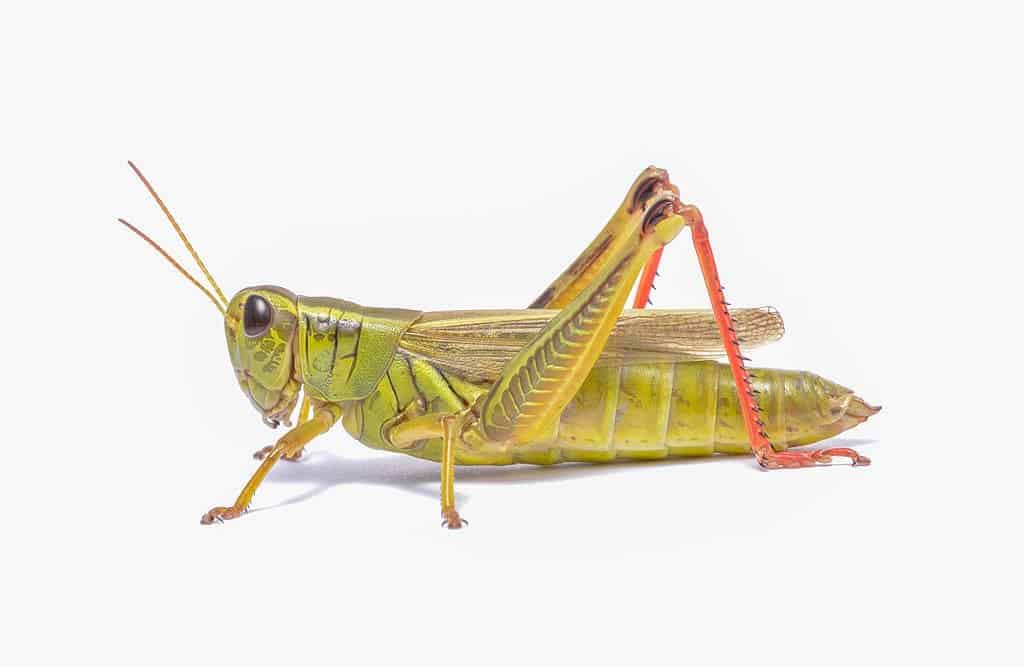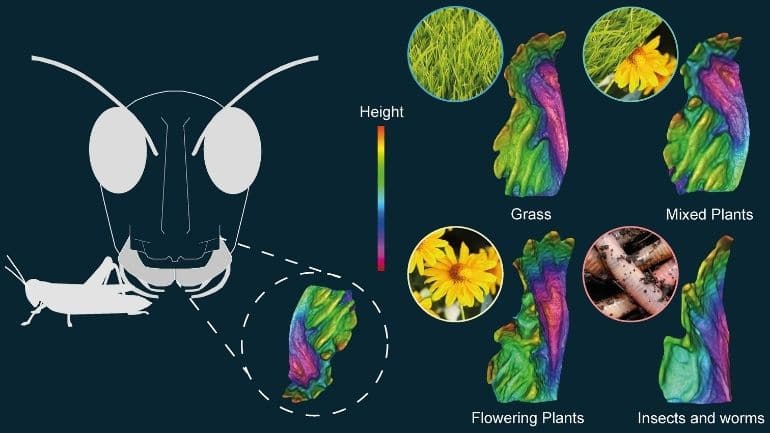Finding out exactly what an animal eats can be tricky, as it usually requires a detailed overview of the contents of their stomachs or time-consuming observations of how they feed in the wild. But there’s a better way. Researchers have precisely mapped the grasshopper’s mandibles using 3D imaging techniques, unveiling its feeding habits.

Grasshoppers are insects of the suborder Caelifera in the order Orthoptera, along with locusts and crickets. There are about 11,000 known species of grasshoppers and most are herbivorous, eating different types of plants, especially grass. However, there are a few exceptions. Some grasshoppers are even carnivorous and play an important role in grasslands and other ecosystems.
The mouthparts of grasshoppers vary according to what they eat. Some have sharper cutting edges, while others have molar-like to eat tough foods. So far researchers have been able to assign grasshoppers only to broad feeding categories. But now, a new study is suggesting a new way to look at the diets of species scientists have limited information.
“Knowing what animals eat is fundamental to understanding ecosystems, but working this out can be difficult and time-consuming, especially if the animals you study are rare, small, or move quickly,” Chris Stockey, corresponding author for the study, said in a statement. “One of the advantages of our method is the powerful comparisons that it provides.”
Grasshoppers and mammals
Dental topographic analysis (the detailed study of tooth shape) is mostly used for mammal teeth — this is the first time it’s carried out on other animals. For the researchers, the method isn’t very demanding and offers a lot of good information as it can be used on any kind of tooth-like structure.

Comparing the mandible of the grasshoppers with mammal’s teeth allowed to predict grasshopper diet with an 82% level of accuracy, which is quite surprising, especially considering the mouthparts of mammals and grasshoppers have evolved independently for over 400 million years, Mark Purnell, study co-author, said in a statement.
The researchers measured the shapes of the grasshopper’s mouthparts and analyzed them as it would be the topography of a landscape, finding differences linked to the diet. The mandibles from those who eat plant material have “complex undulating landscapes,” while the ones from carnivorous grasshoppers have “steeper slopes and sharper cliff edges,” Purnell said.
For their study, the researchers used museum specimens. As they haven’t seen these organisms alive, the only way to know about their diets would have been to dissect them – a slow process that can also damage the specimens and limit their use for further studies. That’s why this new method could be a way forward to learn from animals while not causing any damage to them.
“This study is a great example of combining modern analytical methods with historical samples from museum collections to help understand the biodiversity of our planet. As technology advances additional uses of museum collections become possible and this non-destructive approach could reveal the diet information for thousands of species,” Ben Price, curator at the Naural History Museum, not involved in the study, concluded.
The study was published in the journal Methods in Ecology and Evolution.









